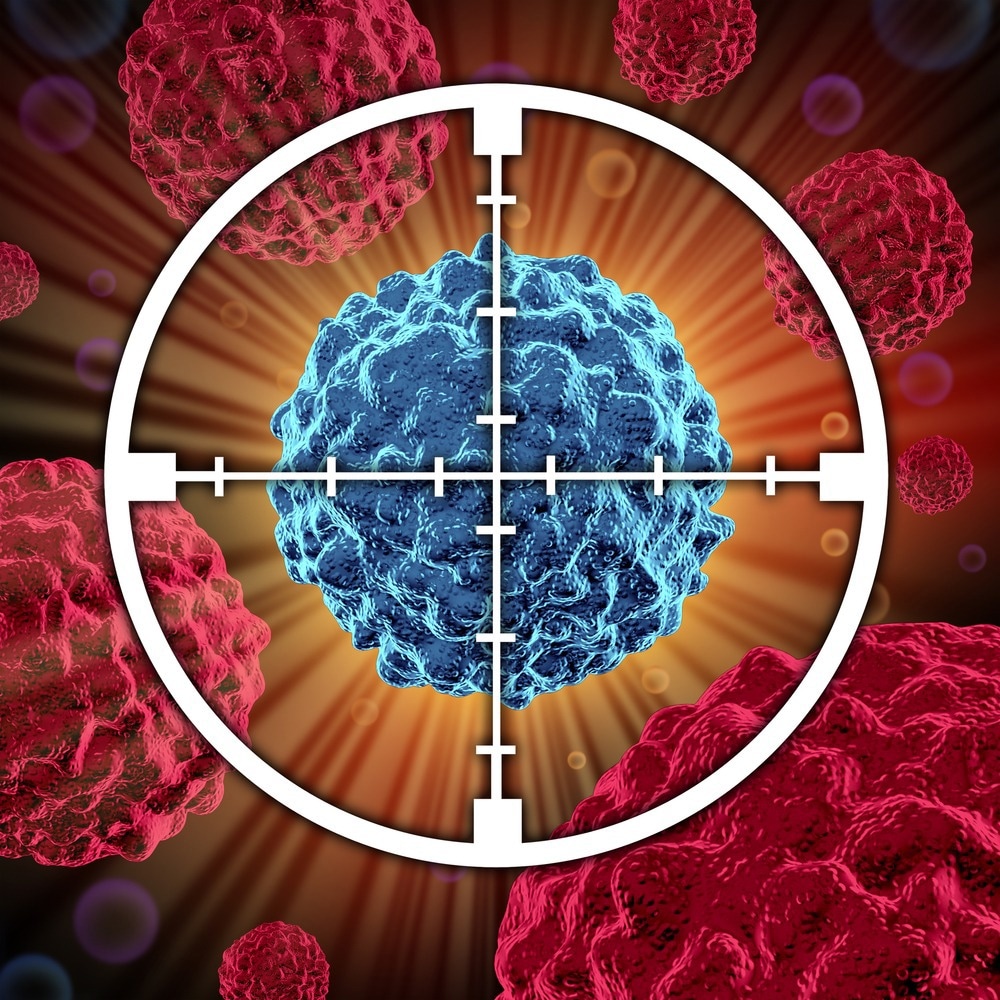Nanomedicine involves nanoscale therapeutics and diagnostics, and imparting targeting capability to these novel systems increases its usefulness. However, the targeted transport of nanomedicines is often obstructed by various biological events in the body.

Study: Hijacking Self-Assembly to Establish Intracellular Functional Nanoparticles. Image Credit: Lightspring/Shutterstock.com
Viruses hijacking the host cells harness the biological events of the latter, including transcription and translation, to realize their replication. An article published in Advanced Science discussed a new strategy inspired by the hijacking strategy of viruses. Here, an endogenous product was hijacked by a drug to assemble into intracellular functional nanoparticles.
Followed by tumor vessel destruction therapy, the small molecule drug “bisphosphonate” hijacks the hemorrhagic product, iron (Fe2+) ions, and ensembles into intercellular peroxidase-like nanoparticles within tumor-infiltrating macrophages. Bisphosphate is a drug clinically used to treat bone problems.
The generated nanoparticles activate the macrophage’s in vitro immune activity and transforms the tumor-associated macrophages (TAMs) from immunosuppressive to tumoricidal. Consequently, recruiting more T cells deep within a tumor.
The self-assembly of nanoparticles mediated by the hijacking of Fe2+ ions substantially suppressed tumor growth compared to conventional treatments with vascular-disrupting agents. Using bisphosphonate in this hijacking strategy to seize Fe2+ ions to fabricate functional nanoparticles within the cell targets offers a new strategy for advanced drug delivery systems and drug development.
Nanoparticles in Nanomedicine
Nanoparticles of approximately 100 nanometers in size have been widely used to improve drug accumulation, internalization, and therapeutic efficacy. The physicochemical and biological properties of the nanoparticles can be finely adjusted by tailoring their chemical properties, size, shape, structure, morphology, and surface properties.
Delivering therapeutic compounds to a target site is a major problem in treating many diseases. The conventional application of drugs may have limited effectiveness, poor biodistribution, and lack of selectivity. It has been established that nanoparticles can become concentrated preferentially in tumor sites, and this is due to the enhanced permeability and retention (EPR) effect of the vasculature.
Various biological events in a living system restrain the targeting functions of nanomedicines. Although passive targeting strategies were proposed to enhance the permeability and retention to reach the tumor site, these strategies yielded disappointing results due to phagocytosis.
On the other hand, active targeting strategies involving surface-modified ligands also lacked efficiency in targeting the tumor site due to surface adsorption of endogenous proteins. Thus, to combat the limitations caused by massive biological events, researchers have been modifying nanoparticles for the past few years to realize the goal of drug target delivery, resulting in unanticipated biological interactions in a few cases.
Alternatively, the self-assembly of nanoparticles has emerged as a new approach to target the tumor cells while escaping any degradation process by the immune system. Self-assembling nanoparticles exhibit high biocompatibility, good flexibility, and easy operability, which are the most significant properties desirable for biomedicine.
Hijacking of Fe2+ Ions by Bisphosphate and Self-Assembly of Nanoparticles
The present work is based on an in vivo physiological process, efferocytosis of erythrocytes, which is a physiological process involving the removal of apoptotic cells by phagocytic cells. Here, the extravasated erythrocytes were phagocytosed by macrophages, and the Fe2+ ions (previously bonded to hemoglobin in erythrocytes) were released by heme oxygenases-1 (HO-1).
Generally, the free Fe2+ ions get oxidized and encapsulated by ferritin, followed by their ejection out of the macrophages by ferroportin 1. However, in the present work, inspired by the viral activity of hijacking the host genome, bisphosphate was utilized to hijack the released free Fe2+ ions released from apoptotic erythrocytes to ensemble into nanoparticles demonstrating that cell-penetrable small molecule drugs can effectively react with endogenous metabolites and self-assemble to form nanoparticles.
Thus, the free Fe2+ ions were self-assembled into peroxidase-like nanoparticles and catalyzed the hydrogen peroxide, persistently stressed the macrophage mitochondria, remodeled the antitumor immune response of TAMs, and suppressed the tumor growth.
Moreover, due to the very low levels of free Fe2+ ions in normal tissues, they have the least possibility to assemble into nanoparticles when circulating in normal tissue, preventing off-target toxicity. Thus, the hijacking strategy was advantageous in preventing off-target toxicity and facilitating the formation of target-specific functional nanoparticles. Compared to the surface or other complex modifications of the nanoparticle, hijacking self-assembly is a facile process with high clinical feasibility.
Conclusion
Overall, the Fe2+-bisphosphonate nanoparticles that self-assembled in host cells exhibited peroxidase-like catalytic function and realized the specific stress on mitochondria, which was unachievable through free bisphosphonate.
The biomimetic strategy to synthesize the nanoparticles avoided the impact of unexpected biological events on nanoparticles, offering a new approach for nanomedicine targeting.
Unlike surface functionalization or other modification of nanoparticles, self-assembly induced by the hijacking of the endogenous product was easy to operate and showed high clinical feasibility. Thus, the hijacking strategy showed the functionalizing ability of small molecule drugs by assembling nanoparticles with endogenous substances, which provides a new prospect in nanotechnology for small molecule drugs.
Reference
Liu, Y et al. (2022). Hijacking Self-Assembly to Establish Intracellular Functional Nanoparticles. Advanced Sciences. https://onlinelibrary.wiley.com/doi/10.1002/advs.202203027
Disclaimer: The views expressed here are those of the author expressed in their private capacity and do not necessarily represent the views of AZoM.com Limited T/A AZoNetwork the owner and operator of this website. This disclaimer forms part of the Terms and conditions of use of this website.